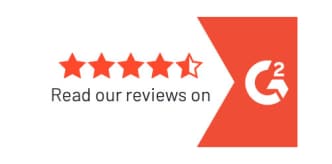When considering starting a retirement plan, businesses have several options, with the SIMPLE IRA and 401(k) being two of the most popular choices. Both plans offer tax advantages and help owners and employees save for retirement, but they differ in terms of contribution limits, administrative requirements, and flexibility. Let’s break down the essential aspects of each plan to help employers and employees determine which one suits their needs best.
What is a SIMPLE IRA?
A SIMPLE IRA (Savings Incentive Match Plan for Employees) is designed specifically for small businesses with 100 or fewer employees. It’s an easy-to-administer retirement plan that is typically a low cost way for employers to offer retirement benefits.
- Contribution Limits: In 2024, employees can contribute up to $16,000, with an additional $3,500 in catch-up contributions allowed for those aged 50 or older.
- Employer Contributions: Employers are required to contribute to the plan. They can either:
- Match up to 3% of the employee’s salary, or
- Make a flat 2% contribution for all eligible employees, regardless of whether the employee contributes.
- Simplicity: One of the biggest advantages of the SIMPLE IRA is its ease of administration. It requires minimal administration, making it an attractive option for small businesses.
However, there are also some drawbacks:
- Lower Contribution Limits: The contribution limits are lower than those of a 401(k), which may limit the amount owners and employees can save annually.
- No Loans Allowed: Employees cannot take out loans from a SIMPLE IRA, which reduces its flexibility in case of financial emergencies.
- Withdrawal Penalties: Early withdrawals within the first two years of participation are subject to a steep 25% penalty, which drops to 10% after that period.
- Lack of Flexibility: Fixed employer contribution amounts and immediate vesting limit the options for designing a plan.
What is a 401(k)?
A 401(k) is a more flexible retirement savings plan fit for businesses of all sizes. It allows for higher contribution limits and more customization, but it does come with potential higher administrative costs and complexity.
- Contribution Limits: In 2024, employees can contribute up to $23,000, with an additional $7,500 in catch-up contributions for those aged 50 and older. These higher limits allow employees to save faster for retirement.
- Employer Contributions: Employers have the option to contribute to the plan but are not required to. If they do, they can choose from various matching formulas. Employers can set a vesting schedule for the match, meaning employees gain ownership of these funds over time rather than immediately, as in a SIMPLE IRA.
- Plan Flexibility: 401(k) plans offer much more flexibility, such as the ability to take out loans against the account balance that they pay back to themselves over time. This feature can provide employees with access to funds in times of financial hardship.
- Complexity and Cost: Administering a 401(k) can involve more complexity and higher costs compared to a SIMPLE IRA. Businesses may need to conduct annual compliance testing and provide regular reporting, which can be costly and time-consuming. Luckily, 401GO eliminates the administrative burden and makes 401(k) plans easy to offer and manage.
Ready to learn more? Let’s talk.
| Feature | SIMPLE IRA | 401(k) |
|---|---|---|
| Designed for | Small businesses (100 or fewer employees) | Businesses of any size |
| Employee Contribution Limit (2024) | $16,000 ($3,500 catch-up for 50+) | $23,000 ($7,500 catch-up for 50+) |
| Employer Contributions | Required (up to 3% match or 2% flat) | Optional, with flexible match options |
| Vesting | Immediate | Typically vested over time |
| Loan Availability | Not allowed | Allowed |
| Administrative Complexity | Simple and cost-effective | Complex and more costly |
| Penalty for Early Withdrawal | 25% within first two years, 10% after | 10% before age 59½ |
SIMPLE IRA and 401(k): Which Retirement Plan is Right for You?
Both the SIMPLE IRA and 401(k) offer significant retirement savings benefits, but the right choice depends on the needs and size of the business, as well as the savings goals of the employees.
- SIMPLE IRA is ideal for small businesses looking for a low-cost, easy-to-administer plan. The mandatory employer contributions ensure employees receive some retirement benefits, even if they choose not to contribute themselves.
- 401(k) is better suited for businesses that want to offer more flexible savings options, higher contribution limits, and plan customization, such as the ability to take loans or implement a vesting schedule. The benefits of increased savings potential and flexibility can give a business a plan specifically designed to meet its needs.
Conclusion
Choosing between a SIMPLE IRA and 401(k) is an important decision for both employers and employees. Each plan has its own set of benefits and limitations. For small businesses that want simplicity and lower costs, the SIMPLE IRA may be the best fit. On the other hand, businesses that want to offer their employees more flexibility, higher contribution limits, and a customizable plan will find the 401(k) more advantageous. In the end, the choice depends on the business’s needs, budget, and how much employees wish to contribute toward their retirement. To learn more and get a sense for whether your specific circumstances are better suited to a SIMPLE IRA or 401(k), schedule a meeting with me and we can discuss it together.



